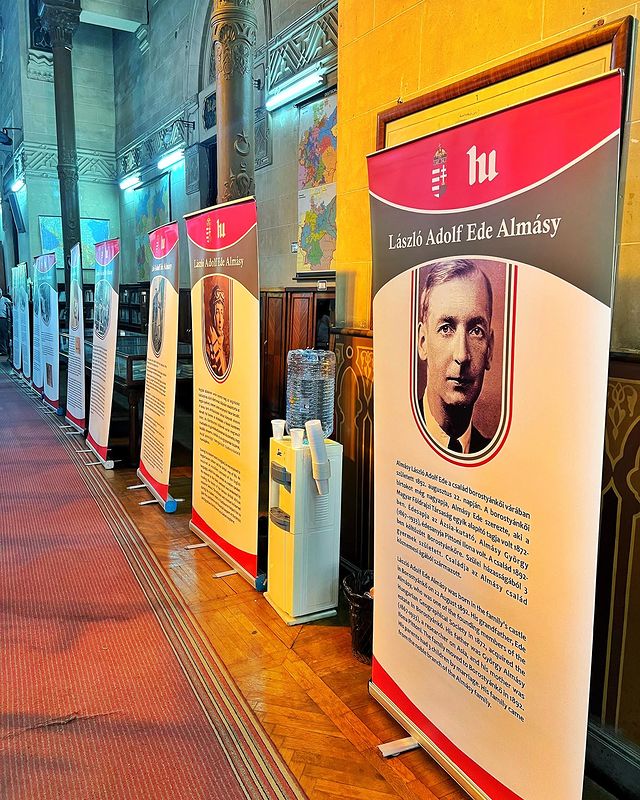László Almásy’s achievements are being revived in Egypt

By Maydaa Abo El-Nadar
In the Egyptian capital, Cairo, at the Egyptian Geographical Society, the Hungarian Embassy along with the Liszt Hungarian Cultural Centre revived László Almásy’s successful path in Egypt and Africa. During so, the Hungarian Cultural Counselor Kornélia Böröczky expressed that the event is one of the events that are held, not only in Egypt but worldwide as well, to disseminate the Hungarian rich culture and to celebrate the Hungarians’ achievements. Posterior to the mentioned celebration, another one happened in the touristic city of Hurghada, Egypt, on the occasion of the Hungarian national anthem’s 200th anniversary.
Who was László Almásy?
Born on the 22nd of August 1892, descending from the noble Almásy family. His birth took place in Borostyánkő, in the family’s castle. Grandson of Ede Almásy, a Hungarian Geographical Society founding member (1872). Son of Ilona Pittoni and György Almásy who was a researcher on Asia. Meet László Adolf Ede Almásy.
His study years in England –Eastbourne-were of great benefit in his favor, on one side, he became acquainted with the Anglo-Saxon culture and the British lifestyle, also he obtained a great command of the English language, on the other, thanks to the books of the British-African explorer Selous, László Almásy became interested in the African continent. The attitude and mindset he acquired on the English land, made the British as well as Egyptians put their trust in him and aid him financially as a desert explorer.
His journey full of achievements in Africa, including Libya and Egypt:
A day before his birthday in 1931 and alongside his friend Nándor Zichy, Almásy took off for his first discovery travel in a plane. A year after (1932), on the first of May, his first notable achievement was discovering the Zarzura Oasis. In the Libyan Desert, the expedition mapped the remaining unknown sites. In 1934 and 1935, he mapped the limitless desert named the Great Sand Sea located in North Africa. Numerous were his discoveries as these include uncovering ancient animal as well as human carvings in sandstone caves and bringing to light the Swimmer’s Cave in the desert.

One of his significant achievements is reporting the existence of a Berber tribe called the Hungarians on an island, in the River Nile, near the Vadi Halfa, he was the first to report so. The ethnic group call themselves the Magyarab and they descend from war prisoners and soldiers in the army of Sultan Soliman I.
- read also: Magyarabs, a Hungarian tribe in Africa
On the Egyptian land, he also contributed to creating sport aviation, after bringing into being the Cairo Aero Club. Additionally, he secured commissions for the Cairo Cartographic Institute.
Supported by the King of Egypt Faruk, he directed efforts to establish a desert research institute; however, he was not able to be the director. He passed away on the 22nd of March 1951. It is written in Arabic as ”Father of the Sand” on his tombstone and in German ” Pilot, Sahara Explorer, Discoverer of the Zarzura Oasis”.
Worth mentioning that the Royal Air Force Airport of Heliopolis was later named Almasay after László Almásy, and then it carried the name of the Royal Air Force Airport of Almaza, during World War II. Currently, it is known as the Egyptian Air Force Airport of Almaza, additionally, there is an area called Almaza in Cairo.
Ralph Fiennes portrayed him on screen but who was the real English patient, László Almásy? – VIDEO
Source:





